Ryobi BG828G User Manual [en, es, fr]
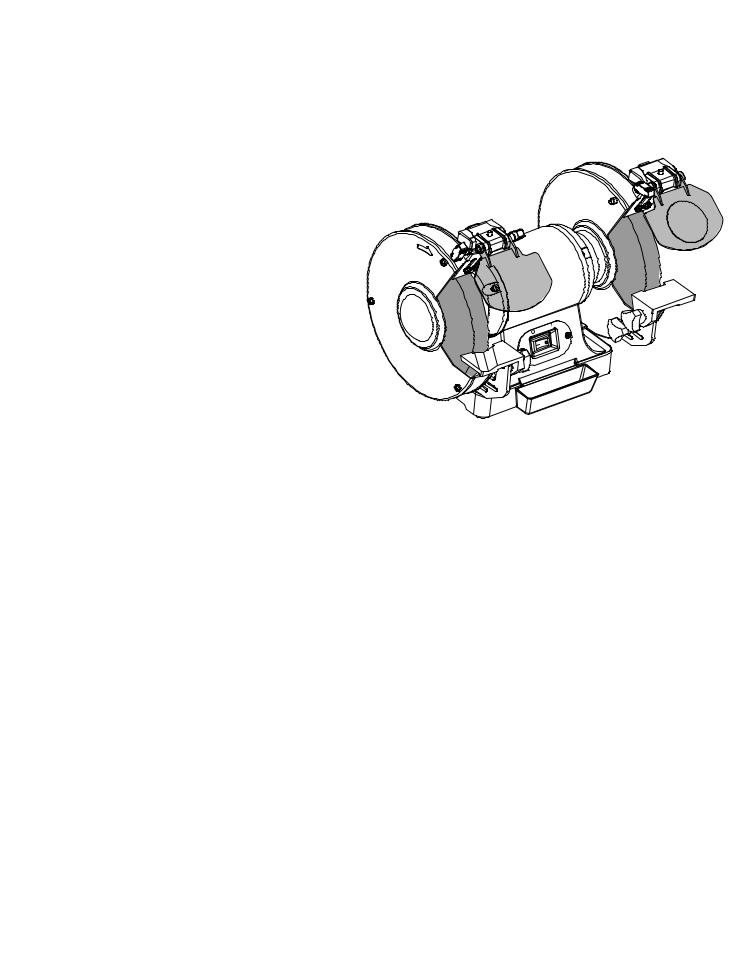
OPERATOR’S MANUAL
MANUEL D’UTILISATION
MANUAL DEL OPERADOR
BENCH GRINDER
MEULEUSE D’ÉTABLI
ESMERILADORA DE BANCO
BG828
TABLE OF CONTENTS |
TABLE DES MATIÈRES |
|
ÍNDICE DE CONTENIDO |
||||
General Safety Rules....................... |
2-3 |
Règles de sécurité générales........... |
2-3 |
Reglas de seguridad generales....... |
2-3 |
||
Specific Safety Rules....................... |
3-4 |
Règles de sécurité particulières....... |
3-4 |
Reglas de seguridad específicas..... |
3-4 |
||
Symbols.............................................. |
5 |
Symboles............................................ |
|
5 |
Símbolos............................................. |
|
5 |
Electrical............................................. |
6 |
Caractéristiques électriques............... |
6 |
Aspectos eléctricos............................ |
|
6 |
|
Features.............................................. |
7 |
Caractéristiques.................................. |
|
7 |
Características.................................... |
|
7 |
Assembly......................................... |
7-8 |
Assemblage..................................... |
|
7-8 |
Armado............................................ |
|
7-8 |
Operation............................................ |
9 |
Utilisation............................................ |
|
9 |
Funcionamiento.................................. |
|
9 |
Maintenance..................................... |
10 |
Entretien............................................ |
|
10 |
Mantenimiento.................................. |
|
10 |
Figures (Illustrations).................... |
11-15 |
Figures (illustrations).................... |
|
11-15 |
Figuras (illustraciones)................. |
|
11-15 |
Parts Ordering |
|
Commande de pièces |
|
|
Pedidos de piezas |
|
|
and Service.......................... |
Back page |
et dépannage..................... |
Page arrière |
y servicio........................ |
Pág. posterior |
||
WARNING: To |
reduce the |
AVERTISSEMENT : Pour |
ADVERTENCIA: Para reducir |
||||
risk of injury, the user must read and |
réduire les risques de blessures, |
el riesgo de lesiones, el usuario debe leer |
|||||
understand the operator’s manual |
l’utilisateur doit lire et veiller à bien |
y comprender el manual del operador |
|||||
before using this product. |
|
comprendre le manuel d’utilisation avant |
antes de usar este producto. |
|
|||
|
d’employer ce produit. |
|
|
|
|||
|
|
|
|
|
|
|
|
SAVE THIS MANUAL FOR |
CONSERVER CE MANUEL |
GUARDE ESTE MANUAL |
|||||
FUTURE REFERENCE |
POUR FUTURE RÉFÉRENCE |
PARA FUTURAS CONSULTAS |
|||||
|
|
|
|
|
|
|
|

GENERAL SAFETY RULES
WARNING:
Read and understand all instructions. Failure to follow all instructions listed below, may result in electric shock, fire and/or serious personal injury.
READ ALL INSTRUCTIONS
KNOW YOUR POWER TOOL. Read the operator’s manual carefully. Learn the grinder’s applications and limitations as well as the specific potential hazards related to this tool.
GUARD AGAINST ELECTRICAL SHOCK BY PREVENTING BODY CONTACT WITH GROUNDED SURFACES. For example, pipes, radiators, ranges, refrigerator, enclosures.
KEEP GUARDS IN PLACE and in good working order.
REMOVE ADJUSTING KEYS AND WRENCHES. Form the habit of checking to see that keys and adjusting wrenches are removed from tool before turning it on.
KEEPWORKAREACLEAN.Clutteredareasandbenches invite accidents. DO NOT leave tools or pieces of wood on the bench grinder while it is in operation.
DO NOT USE IN DANGEROUS ENVIRONMENTS. Do not use power tools in damp or wet locations or expose to rain. Keep the work area well lit.
KEEP CHILDREN AND VISITORS AWAY. All visitors should wear safety glasses and be kept a safe distance from work area. Do not let visitors contact tool or extension cord while operating.
MAKE WORKSHOP CHILDPROOF with padlocks and master switches, or by removing starter keys.
DON’T FORCE TOOL. It will do the job better and safer at the feed rate for which it was designed.
USE RIGHT TOOL. Don't force the tool or attachment to do a job it was not designed for. Don't use it for a purpose not intended.
USE THE PROPER EXTENSION CORD. Make sure your extension cord is in good condition. Use only a cord heavy enough to carry the current your product will draw. An undersized cord will cause a drop in line voltage resulting in loss of power and overheating. A wire gauge size (A.W.G.) of at least 16 is recommended for an extension cord 25 feet or less in length. If in doubt, use the next heavier gauge. The smaller the gauge number, the heavier the cord.
DRESS PROPERLY. Do not wear loose clothing, gloves, neckties, or jewelry. They can get caught and draw you into moving parts. Rubber gloves and nonskid footwear are recommended when working outdoors. Also wear protective hair covering to contain long hair.
ALWAYS WEAR SAFETY GLASSES WITH SIDE SHIELDS. Everyday eyeglasses have only impactresistant lenses, they are not safety glasses.
SECURE WORK. Use clamps or a vise to hold work when practical. It’s safer than using your hand and frees both hands to operate tool.
DON’T OVERREACH. Keep proper footing and balance at all times.
MAINTAIN TOOLS WITH CARE. Keep tools sharp and clean for better and safer performance. Follow instructions for lubricating and changing accessories.
DISCONNECT TOOLS. When not in use, before servicing, or when changing attachments, grinding wheels, etc., all tools should be disconnected.
AVOID ACCIDENTAL STARTING. Be sure switch is off when plugging in any tool.
USE RECOMMENDED ACCESSORIES. Consult the operator’s manual for recommended accessories. The use of improper accessories may cause risk of injury to persons.
NEVER STAND ON TOOL. Serious injury could occur if the tool is tipped or if the cutting tool is unintentionally contacted.
CHECK DAMAGED PARTS. Before further use of the tool, a guard or other part that is damaged should be carefully checked to determine that it will operate properly and perform its intended function. Check for alignment of moving parts, binding of moving parts, breakage of parts, mounting and any other conditions that may affect its operation. A guard or other part that is damaged must be properly repaired or replaced by an authorized service center to avoid risk of personal injury.
NEVER LEAVE TOOL RUNNING UNATTENDED. TURN THE POWER OFF.
PROTECT YOUR LUNGS. Wear a face or dust mask if the grinding operation is dusty.
PROTECT YOUR HEARING. Wear hearing protection during extended periods of operation.
DO NOT ABUSE CORD. Never yank cord to disconnect from receptacle. Keep cord from heat, oil, and sharp edges.
USE OUTDOOR EXTENSION CORDS. When tool is used outdoors, use only extension cords with approved ground connection that are intended for use outdoors and so marked.
WHEELS COASTS AFTER BEING TURNED OFF.
NEVER USE IN AN EXPLOSIVE ATMOSPHERE.
Normal sparking of the motor could ignite fumes.
2 – English

GENERAL SAFETY RULES
INSPECT TOOL CORDS PERIODICALLY. If damaged,haverepairedbyaqualifiedservicetechnicianat an authorized service facility. The conductor with insulation having an outer surface that is green with or without yellow stripes is the equipment-grounding conductor. If repair or replacement of the electric cord or plug is necessary, do not connect the equipment-grounding conductor to a live terminal. Repair or replace a damaged or worn cord immediately. Stay constantly aware of cord location and keep it well away from the rotating grinding wheels.
INSPECT EXTENSION CORDS PERIODICALLY and replace if damaged.
GROUND ALL TOOLS. If tool is equipped with threeprong plug, it should be plugged into a three-hole electrical receptacle.
CHECK WITH A QUALIFIED ELECTRICIAN or service personnel if the grounding instructions are not completely understood or if in doubt as to whether the tool is properly grounded.
USE ONLY CORRECT ELECTRICAL DEVICES: 3-wire extension cords that have 3-prong grounding plugs and 3-pole receptacles that accept the tool’s plug.
DO NOT MODIFY the plug provided. If it will not fit the outlet, have the proper outlet installed by a qualified electrician.
DO NOT USE TOOL IF SWITCH DOES NOT TURN IT ON AND OFF. Have defective switches replaced by an authorized service center.
USE ONLY CORRECT WHEELS. Do not use wheels with incorrect size holes. Never use wheel washers or wheel bolts that are defective or incorrect. The maximum wheel capacity of your grinder is 8in.
NEVER TOUCH WHEEL or other moving parts during use.
NEVER START A TOOL WHEN ANY ROTATING COMPONENT IS IN CONTACT WITH THE WORKPIECE.
DO NOT OPERATE A TOOL WHILE UNDER THE INFLUENCE OF DRUGS, ALCOHOL, OR ANY MEDICATION.
WHEN SERVICING use only identical replacement parts. Use of any other parts may create a hazard or cause product damage.
USE ONLY RECOMMENDED ACCESSORIES listed in this manual or addendums. Use of accessories that are not listed may cause the risk of personal injury. Instructions for safe use of accessories are included with the accessory.
DOUBLE CHECK ALL SETUPS. Make sure wheel is tight and not making contact with workpiece before connecting to power supply.
SPECIFIC SAFETY RULES
NEVER reach to pick up a workpiece, a piece of scrap, or anything else that is in or near the grinding path of the wheel.
AVOID AWKWARD OPERATIONS AND HAND POSITIONS where a sudden slip could cause your hand to move into the wheel. ALWAYS make sure you have good balance.
NEVER stand or have any part of your body in line with the path of the wheel.
DO NOT USE TOOL IF SWITCH DOES NOT TURN IT ON AND OFF. Have defective switches replaced by an authorized service center.
DO NOT TURN THE MOTOR SWITCH ON AND OFF RAPIDLY. This could cause the wheel to loosen and could create a hazard. Should this ever occur, stand clear and allow the wheel to come to a complete stop. Disconnect your grinder from the power supply and securely retighten the wheel nut.
USE ONLY FLANGES furnished with this bench grinder.
IF ANY PART OF THIS GRINDER IS MISSING or should break, bend, or fail in any way, or should any electrical component fail to perform properly, shut off the power switch, remove the machine plug from the power source and have damaged, missing, or failed parts replaced before resuming operation.
MAKE SURE THE GRINDER IS SECURELY MOUNTED as described in the operating instructions before connecting the tool to a power supply.
DO NOT OVERTIGHTEN THE WHEEL NUT. Excessive tightening can cause the wheel to crack during operation.
ALWAYS USE THE GRINDER'S WHEEL GUARDS AND SPARK SHIELDS.
INSPECT GRINDING WHEEL for visible defects. Check the wheel for fissures and cracks, and test for normal operation prior to use. Replace cracked wheel immediately.
3 – English

SPECIFIC SAFETY RULES
ADJUST distance between wheel and work rest to maintain 1/16 in. or less separation as the diameter of the wheel decreases with use. The value of separation used in the marking is to be the separation recommended by the manufacturer but shall not be more than 1/8 in.
ALWAYS EASE THE WORKPIECE AGAINST THE ABRASIVE WHEEL when starting to grind. A harsh impact can break the wheel. Use light pressure when starting to grind; too much pressure on a cold wheel can cause the wheel to crack.
RISK OF INJURY DUE TO ACCIDENTAL STARTING. Do not use in an area where children may be present.
NEVER START THE GRINDER when the wheel is in contact with the workpiece.
SECURE WORK. Always hold workpiece firmly against the work rest.
DO NOT USE THE BENCH GRINDER if the flange nut or clamp nut is missing or if the spindle shaft is bent.
FREQUENTLY clean grinding dust from beneath grinder.
STAY ALERT AND EXERCISE CONTROL. Watch what you are doing and use common sense. Do not operate tool when you are tired. Do not rush.
IF THE POWER SUPPLY CORD IS DAMAGED, it must be replaced only by the manufacturer or by an authorized service center to avoid risk.
ALWAYS WEAR EYE PROTECTION WITH SIDE SHIELDS MARKED TO COMPLY WITH ANSI Z87.1.
Failure to do so could result in objects being thrown into your eyes, resulting in possible serious injury.
SAVE THESE INSTRUCTIONS. Refer to them frequently and use to instruct other users. If you loan someone this tool, loan them these instructions also.
CALIFORNIA PROPOSITION 65
 WARNING:
WARNING:
This product and some dust created by power sanding, sawing, grinding, drilling, and other construction activities may contain chemicals, including lead, known to the State of California to cause cancer, birth defects, or other reproductive harm. Wash hands after handling.
Some examples of these chemicals are:
•lead from lead-based paints,
•crystalline silica from bricks and cement and other masonry products and,
•arsenic and chromium from chemically treated lumber.
Your risk from exposure to these chemicals varies, depending on how often you do this type of work. To reduce your exposure, work in a well-ventilated area and with approved safety equipment, such as dust masks that are specially designed to filter out microscopic particles.
4 – English
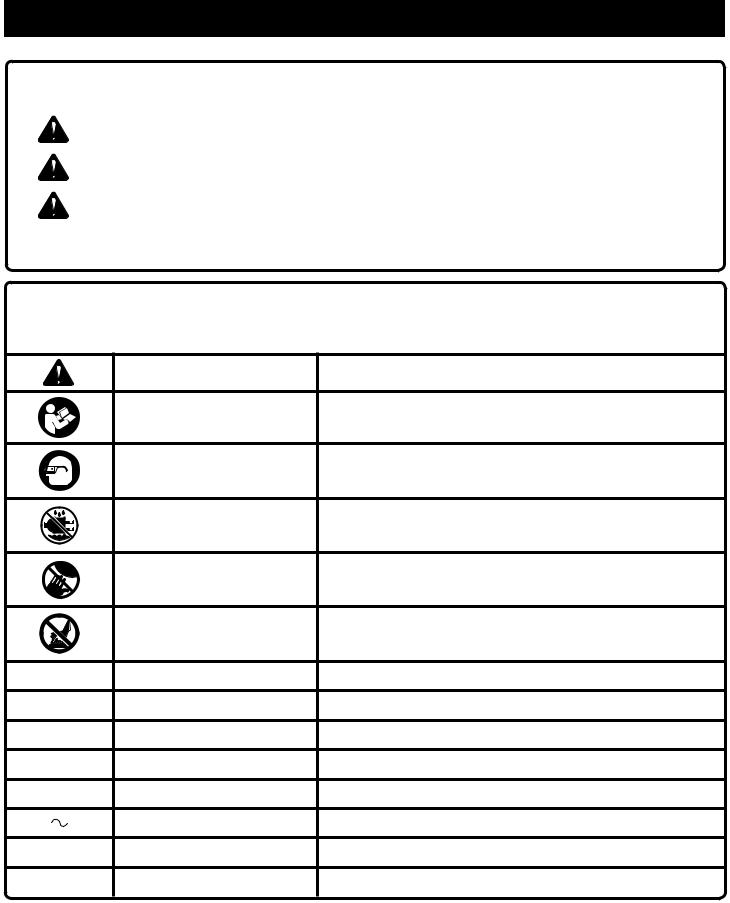
SYMBOLS
The following signal words and meanings are intended to explain the levels of risk associated with this product.
SYMBOL |
SIGNAL |
MEANING |
|
|
|
|
DANGER: |
Indicates an imminently hazardous situation, which, if not avoided, will result |
|
in death or serious injury. |
|
|
|
|
|
|
|
|
WARNING: |
Indicates a potentially hazardous situation, which, if not avoided, could result |
|
in death or serious injury. |
|
|
|
|
|
|
|
|
CAUTION: |
Indicates a potentially hazardous situation, which, if not avoided, may result in |
|
minor or moderate injury. |
|
|
|
|
|
|
|
|
NOTICE: |
(Without Safety Alert Symbol) Indicates important information not related to an |
|
injury hazard, such as a situation that may result in property damage. |
|
|
|
Some of the following symbols may be used on this product. Please study them and learn their meaning. Proper interpretation of these symbols will allow you to operate the product better and safer.
SYMBOL |
NAME |
DESIGNATION/EXPLANATION |
|
Safety Alert |
Indicates a potential personal injury hazard. |
|
Read Operator’s Manual |
To reduce the risk of injury, user must read and understand operator’s |
|
manual before using this product. |
|
|
|
|
|
Eye Protection |
Always wear eye protection with side shields marked to comply |
|
with ANSI Z87.1. |
|
|
|
|
|
Wet Conditions Alert |
Do not expose to rain or use in damp locations. |
|
No Hands Symbol |
Failure to keep your hands away from the blade will result in serious |
|
personal injury. |
|
|
|
|
|
Hot Surface |
To reduce the risk of injury or damage, avoid contact with any hot |
|
surface. |
|
|
|
|
V |
Volts |
Voltage |
A |
Amperes |
Current |
Hz |
Hertz |
Frequency (cycles per second) |
W |
Watt |
Power |
min |
Minutes |
Time |
|
Alternating Current |
Type of current |
no |
No Load Speed |
Rotational speed, at no load |
.../min |
Per Minute |
Revolutions, strokes, surface speed, orbits etc., per minute |
5 – English
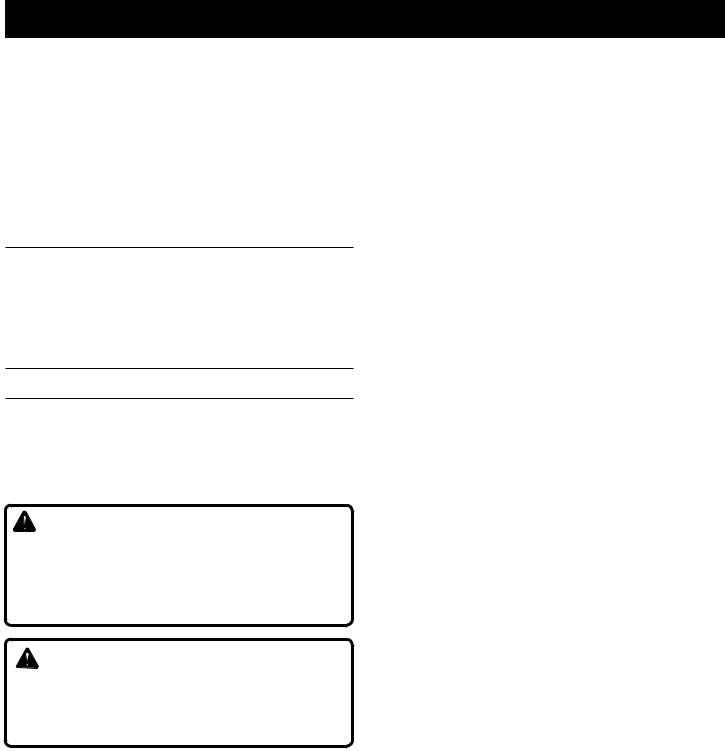
ELECTRICAL
EXTENSION CORDS
Use only 3-wire extension cords that have 3-prong grounding plugs and 3-pole receptacles that accept the tool's plug. When using a power tool at a considerable distance from the power source, use an extension cord heavy enough to carry the current that the tool will draw. An undersized extension cord will cause a drop in line voltage, resulting in a loss of power and causing the motor to overheat. Use the chart provided below to determine the minimum wire size required in an extension cord. Only round jacketed cords listed by Underwriter's Laboratories (UL) should be used.
**Ampere rating (on tool data plate) |
|
|
|
|
||
|
0-2.0 |
2.1-3.4 |
3.5-5.0 5.1-7.0 |
7.1-12.0 |
12.1-16.0 |
|
|
|
|
|
|||
Cord Length |
Wire Size (A.W.G.) |
|
|
|||
|
|
|
|
|
|
|
25’ |
16 |
16 |
16 |
16 |
14 |
14 |
|
|
|
|
|
|
|
50’ |
16 |
16 |
16 |
14 |
14 |
12 |
|
|
|
|
|
|
|
100’ |
16 |
16 |
14 |
12 |
10 |
— |
**Used on 12 gauge - 20 amp circuit. NOTE: AWG = American Wire Gauge
When working with the tool outdoors, use an extension cord that is designed for outside use. This is indicated by the letters “W-A” or “W” on the cord's jacket.
Before using an extension cord, inspect it for loose or exposed wires and cut or worn insulation.
WARNING:
Keep the extension cord clear of the working area. Position the cord so that it will not get caught on lumber, tools or other obstructions while you are working with a power tool. Failure to do so can result in serious personal injury.
WARNING:
Check extension cords before each use. If damaged replace immediately. Never use tool with a damaged cord since touching the damaged area could cause electrical shock resulting in serious injury.
ELECTRICAL CONNECTION
This tool is powered by a precision built electric motor. It should be connected to a power supply that is 120 volts, 60 Hz, AC only (normal household current). Do not operate this tool on direct current (DC). A substantial voltage drop will cause a loss of power and the motor will overheat. If the grinder does not operate when plugged into an outlet, double check the power supply.
SPEED AND WIRING
The no-load speed of this tool is approximately 3,600 rpm. This speed is not constant and decreases under a load or with lower voltage. For voltage, the wiring in a shop is as important as the motor’s horsepower rating. A line intended only for lights cannot properly carry a power tool motor. Wire that is heavy enough for a short distance will be too light for a greater distance. A line that can support one power tool may not be able to support two or three tools.
GROUNDING INSTRUCTIONS
See Figure 1, page 11.
In the event of a malfunction or breakdown, grounding provides a path of least resistance for electric current to reduce the risk of electric shock. This tool is equipped with an electric cord having an equipment-grounding conductor and a grounding plug. The plug must be plugged into a matching outlet that is properly installed and grounded in accordance with all local codes and ordinances.
Do not modify the plug provided. If it will not fit the outlet, have the proper outlet installed by a qualified electrician. Improper connection of the equipment-grounding conductor can result in a risk of electric shock. The conductor with insulation having an outer surface that is green with or without yellow stripes is the equipment-grounding conductor. If repair or replacement of the electric cord or plug is necessary, do not connect the equipment-grounding conductor to a live terminal.
Check with a qualified electrician or service personnel if the grounding instructions are not completely understood, or if in doubt as to whether the tool is properly grounded.
Repair or replace a damaged or worn cord immediately.
This tool is intended for use on a circuit that has an outlet like the one shown in figure 1. It also has a grounding pin like the one shown.
6 – English
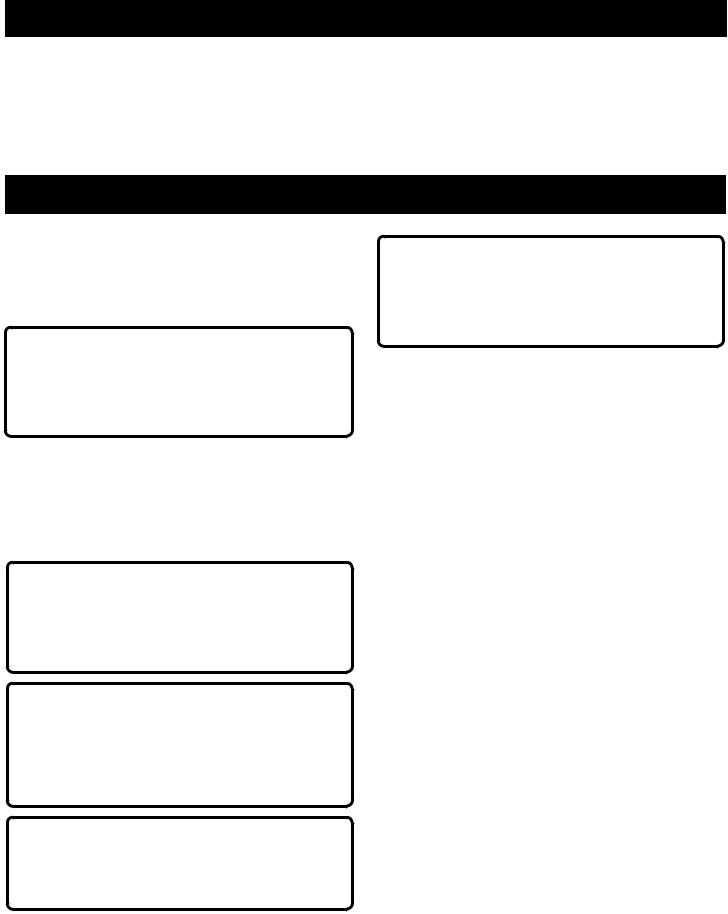
FEATURES
PRODUCT SPECIFICATIONS
Wheel Diameter............................................................ |
8 in. |
Wheel Thickness.......................................................... |
1 in. |
Arbor Hole................................................................. |
5/8 in. |
No Load Speed...................................... |
3600 r/min. (RPM) |
Input................................ |
120 V, AC only, 60 Hz, 3.0 Amps |
ASSEMBLY
UNPACKING
This product requires assembly.
nCarefully remove the tool and any accessories from the box. Make sure that all items listed in the packing list are included.
 WARNING:
WARNING:
Do not use this product if it is not completely assembled or if any parts appear to be missing or damaged. Use of a product that is not properly and completely assembled could result in serious personal injury.
nInspect the tool carefully to make sure no breakage or damage occurred during shipping.
nDo not discard the packing material until you have carefully inspected and satisfactorily operated the tool.
nIf any parts are damaged or missing, please call 1-800-525-2579 for assistance.
 WARNING:
WARNING:
If any parts are damaged or missing do not operate this product until the parts are replaced. Use of this product with damaged or missing parts could result in serious personal injury.
 WARNING:
WARNING:
Do not attempt to modify this tool or create accessories not recommended for use with this tool. Any such alteration or modification is misuse and could result in a hazardous condition leading to possible serious personal injury.
 WARNING:
WARNING:
Do not connect to power supply until assembly is complete. Failure to comply could result in accidental starting and possible serious personal injury.
 WARNING:
WARNING:
Always disconnect the bench grinder from the power source before performing any assembly. Failure to do so could result in accidental starting resulting in possible serious personal injury.
TOOLS NEEDED
See Figure 2, page 11.
The following tools (not included or drawn to scale) are needed for assembly:
Adjustable Wrench
Phillips Screwdriver
LOOSE PARTS LIST |
|
|
See Figure 3, page 12. |
|
|
The following items are included with the tool: |
|
|
|
Screw.......................................................................... |
4 |
|
Washer........................................................................ |
4 |
|
Lock washer............................................................... |
4 |
|
Spark shield, left......................................................... |
1 |
Spark shield with magnifier, right............................... |
1 |
|
Spark deflector with LED assembly............................ |
2 |
|
|
Work rest knob........................................................... |
2 |
|
Flat washer................................................................. |
2 |
|
Lock washer............................................................... |
2 |
|
Work rest bracket....................................................... |
2 |
|
Bracket knob.............................................................. |
2 |
|
Star washer................................................................. |
2 |
|
Washer........................................................................ |
2 |
|
Work rest, left............................................................. |
1 |
|
Work rest, right........................................................... |
1 |
|
Coolant tray................................................................ |
1 |
|
Batteries (AAA)............................................................ |
4 |
7 – English

ASSEMBLY
ATTACHING SPARK SHIELD TO SPARK DEFLECTOR WITH LED
See Figure 4, page 12.
Hold the bolt and rotate the spark shield knob counterclockwise to loosen.
Remove the bolt and spark shield knob.
Place spark shield onto spark deflector with LED assembly. Align the holes in the spark shield with the holes in the spark deflector with LED assembly.
Install bolt through the holes in the spark deflector with LED assembly and spark shield.
NOTE: Orient the bolt so that the head of the bolt sits in the recessed area of the spark shield.
Reinstall spark shield knob onto the bolt. Tighten securely.
MOUNTING SPARK SHIELDS ASSEMBLY
See Figure 5, page 12.
Attach the spark shield assembly to the wheel guard using two screws, washers, and lock washers.
Tighten screw securely.
Repeat above steps for the second spark shield assembly.
NOTE: The spark shields can be installed on either side of the tool. For detailed grinding, it’s recommended to place the spark shield with magnifier on the right side above the finer wheel.
MOUNTING WORK RESTS
See Figure 6, page 13.
nRemove the bracket knob, star washer, and washer from the carriage bolt on the lower portion of right wheel guard.
nUsing the slotted screw, star washer, washer and bracket knob, attach the work rest bracket to the inside of the wheel guard as shown.
NOTE: The grooved work rest mounts on the left side.
NOTE: The work rest bracket’s lower slot must be positioned over the pin on the guard.
nWith the work rest knob, install the work rest to the bracket.
Repeat above steps for the left work rest.
NOTE: Adjust the distance between the wheel and the work rest to maintain 1/16 in. or less separation as the diameter of the wheel decreases with use.
INSTALLING/REMOVING BATTERIES
See Figure 7, page 13.
Always turn the on/off switch to the OFF position when installing batteries.
Remove battery covers from the spark deflectors with LED assemblies.
Install AAA batteries according to the polarity indicators (+ or -) inside the battery compartments.
Replace and secure the battery covers.
INSTALLING COOLANT TRAY
See Figure 8, page 13.
Place coolant tray over the coolant tray bracket then firmly push tray down onto the bracket to secure in place.
MOUNTING GRINDER TO WORKBENCH
See Figure 9, page 13.
If grinder is to be used in a permanent location, it should be fastened securely to a firm supporting surface, such as a workbench with bolts.
nUse 1/4 in. bolts, washers, and nuts (not included). The bolt length should be 1-1/2 in. plus the thickness of the workbench.
nLocate and mark the holes where the grinder is to be mounted.
nDrill four 3/8 in. diameter holes through workbench.
nPlace sander on workbench, aligning holes in base with holes drilled in workbench.
nInsert four 1/4 in. diameter bolts and washers and attach nuts securely.
 WARNING:
WARNING:
Always make sure your bench grinder is securely mounted to a workbench. Failure to do so could result in an accident resulting in possible serious personal injury.
8 – English
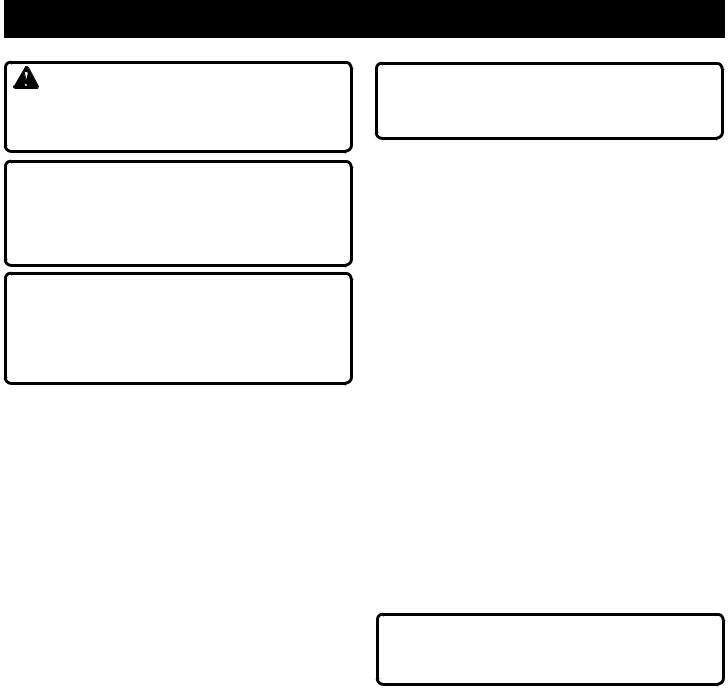
OPERATION
WARNING:
Do not allow familiarity with tools to make you careless. Remember that a careless fraction of a second is sufficient to inflict serious injury.
 WARNING:
WARNING:
Always wear eye protection with side shields marked to comply with ANSI Z87.1. Failure to do so could result in objects being thrown into your eyes resulting in possible serious injury.
 WARNING:
WARNING:
Do not use any attachments or accessories not recommended by the manufacturer of this tool. The use of attachments or accessories not recommended can result in serious personal injury.
APPLICATIONS
This product has been designed only for the purposes listed below:
Sharpening drill bits
Sharpening lawn mower blades
Sharpening chisels and flat screwdrivers
LED LIGHT SWITCH
See Figure 10, page 14.
Use the LED light switch on top of the spark shield assembly to turn the lights on and off.
BASIC OPERATION
To be efficient and work as designed, your tools should be kept sharp. Dull tools can and will cause accidents.
Bench grinders are ideal for sharpening tools such as chisels, scissors, etc., and for removing rust or corrosion. Grinders remove material rapidly so pressure is the key to efficient grinding.
The proper way to sharpen a tool and avoid overheating is:
Keep the object in constant motion, moving it at an even pace.
Never force a tool against the grinding wheel.
Keep the tool cool by using a pan of water.
The grinding wheel should rotate “into” the object being sharpened.
NOTE: Excessive pressure may damage the tool, cause the motor to overheat, and prematurely wear down the grinding wheel.
 WARNING:
WARNING:
Excessive pressure on a cold wheel could cause the wheel to crack.
USING COOLANT TRAY
The coolant tray allows you to cool overheated workpieces. Fill tray half way with water or appropriate coolant.
ON/OFF SWITCH
See Figure 11, page 14.
The Bench Grinder features a front access On/Off switch for convenience and safety.
SHARPENING TWIST DRILL BITS
See Figure 12, page 14.
Drill bits are best sharpened on a sharpening jig (available at most hardware stores). Begin on one side of the point at the existing angle, then twist the bit while maintaining contact with the grinding surface. Sharpen only the tip.
This technique requires considerable practice, so take your time and make a few “dry runs” first with the grinder off. Be sure to maintain the original cutting edge angle as this is important to the efficiency of your bits. One work rest has a V-groove angled to fit most drill bits.
SHARPENING LAWN MOWER BLADES
See Figure 13, page 14.
Lawn mower blades are usually sharpened on only one edge and dressed up slightly on the other. Perform this sharpening process on both cutting ends of the blade. After sharpening, be sure to balance the blade by removing additional material.
NOTICE:
An unbalanced lawn mower blade may cause excessive vibration which will damage the lawn mower.
SHARPENING CHISELS AND SCREWDRIVER BLADES
See Figure 14, page 14.
When sharpening chisels and screwdrivers, work rest should support the chisel at the correct angle against the wheel.
9 – English
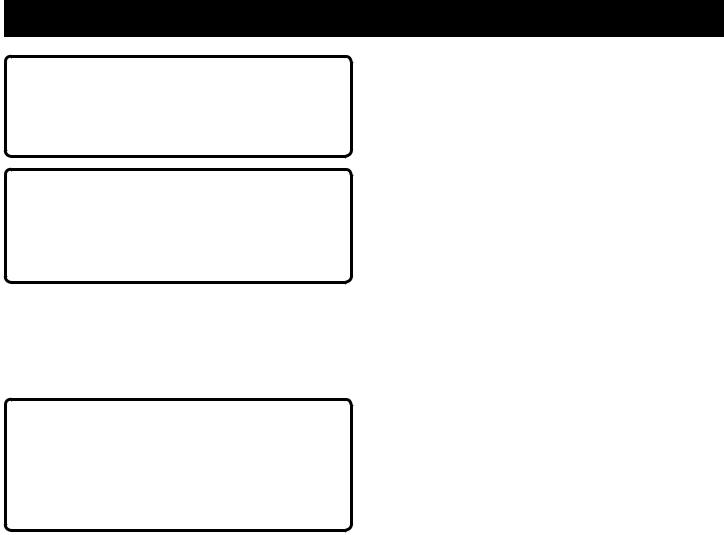
MAINTENANCE
 WARNING:
WARNING:
When servicing, use only identical replacement parts. Use of any other parts could create a hazard or cause product damage.
 WARNING:
WARNING:
Always wear eye protection with side shields marked to comply with ANSI Z87.1. Failure to do so could result in objects being thrown into your eyes resulting in possible serious injury.
GENERAL MAINTENANCE
Avoid using solvents when cleaning plastic parts. Most plastics are susceptible to damage from various types of commercial solvents and may be damaged by their use. Use clean cloths to remove dirt, dust, oil, grease, etc.
 WARNING:
WARNING:
Do not at any time let brake fluids, gasoline, petroleumbased products, penetrating oils, etc., come in contact with plastic parts. Chemicals can damage, weaken or destroy plastic which could result in serious personal injury.
LUBRICATION
All of the bearings in this tool are lubricated with a sufficient amount of high grade lubricant for the life of the unit under normal operating conditions. Therefore, no further lubrication is required.
POWER SUPPLY CORD REPLACEMENT
If replacement of the power supply cord is necessary, this must be done by an authorized service center in order to avoid a safety hazard.
WHEEL REPLACEMENT
See Figure 15, page 15.
If you must replace a grinding wheel, be sure to obtain one with a safe rated speed at least as high as the “no load speed” RPM marked on the data plate of the grinder and which is marked to comply with ANSI B7.1.
To replace the grinding wheel:
nUnplug the grinder.
nRemove the wheel cover by loosening the screws.
nLoosen the wheel nut in a clockwise direction for the left side and a counterclockwise direction for the right side.
nRemove the outer flange and grinding wheel.
nTo install a new grinding wheel, reverse the above procedure.
NOTE: Be sure the grinding wheel and outer flange are properly seated on the spindle shaft.
NOTE: FIGURES (ILLUSTRATIONS) START ON PAGE 11 AFTER FRENCH AND SPANISH LANGUAGE SECTIONS.
This product has a Three-year Limited Warranty.
For Warranty details go to www.ryobitools.com
10 – English

RÈGLES DE SÉCURITÉ GÉNÉRALES
 AVERTISSEMENT :
AVERTISSEMENT :
Lireetveilleràbiencomprendretouteslesinstructions.
Le non respect de toutes les instructions ci-dessous peut entraîner un choc électrique, un incendie et / ou des blessures graves.
LIRE TOUTES LES INSTRUCTIONS
VEILLERÀBIENCONNAÎTREL’OUTIL.Lireattentivement le manuel d’utilisation. Apprendre les applications et les limites de la meuleuse, ainsi que les risques spécifiques relatifs à son utilisation.
SE PROTÉGER DES CHOCS ÉLECTRIQUES EN ÉVITANT TOUT CONTACT DU CORPS AVEC DES SURFACES MISES À LA TERRE. Par exemple : tuyaux, radiateurs, cuisinières, réfrigérateurs.
MAINTENIRTOUSLESDISPOSITIFSDEPROTECTION EN PLACE et en bon état de fonctionnement.
RETIRER LES CLÉS ET OUTILS DE RÉGLAGE. Prendre l’habitude de vérifier que tous les outils et clés de réglage en ont été retirés de l’outil avant de le mettre en marche.
GARDER LE LIEU DE TRAVAIL PROPRE. Les établis encombrés et les endroits sombres sont propices aux accidents. NE PAS laisser d’outils ou de pièces de bois sur la meuleuse en fonctionnement.
NE PAS UTILISER DANS UN ENVIRONNEMENT DANGEREUX. Ne pas utiliser les outils électriques dans des endroits mouillés ou humides, ne pas les exposer à la pluie. Garder le lieu de travail bien éclairé.
GARDER LES ENFANTS ET VISITEURS À L’ÉCART.
Tous les visiteurs doivent porter des lunettes de sécurité et se tenir à bonne distance de la zone de travail. Ne pas laisser les visiteurs toucher l’outil ou son cordon d’alimentation pendant le fonctionnement.
ASSURER LA SÉCURITÉ DES ENFANTS en installant des cadenas et des disjoncteurs ou en retirant les clés de contact.
NE PAS FORCER L’OUTIL. Il exécutera le travail mieux et de façon moins dangereuse s’il fonctionne dans les limites prévues.
UTILISER L’OUTIL APPROPRIÉ. Ne pas utiliser l’outil ou un accessoire pour effectuer un travail pour lequel il n’est pas conçu. Ne ne pas utiliser l’outil pour une application non prévue.
UTILISER UN CORDON PROLONGATEUR ADÉQUAT.
S’assurer que le cordon prolongateur est en bon état. Utiliser exclusivement un cordon d’une capacité suffisante pour supporter le courant de fonctionnement de l’outil. Un cordon de capacité insuffisante causerait une baisse de la tension de ligne, entraînant une perte de puissance et une surchauffe. Un calibre de fil (A.W.G.) d’au minimum 16 est recommandé pour un cordon prolongateur de 7,6 m (25 pi) ou moins. En cas de doute, utiliser un
cordon du calibre immédiatement supérieur. Moins le numéro de calibre est élevé, plus la capacité du fil est grande.
PORTER UNE TENUE APPROPRIÉE. Ne porter pas porter de vêtements amples, gants, cravate ou bijoux. Ces articles pourraient être happés et tirer la main ou une parie du corps dans les pièces en mouvement. Des gants en caoutchouc et des chaussures antidérapantes sont recommandées pour le travail à l’extérieur. Les cheveux longs doivent être ramassés sous un couvre-chef.
TOUJOURSPORTER DES LUNETTES DE SÉCURITÉ
À COQUES LATÉRALES. Les lunettes de vue ordinaires
sont munies seulement de verres résistants aux impacts. Ce ne sont PAS des lunettes de sécurité.
ASSUJETTIRLESPIÈCES.Dans la mesure du possible, utiliser des serre-joint ou un étau pour maintenir la pièce. Cette pratique réduit les risques et laisse les deux mains libres.
NE PAS TRAVAILLER HORS DE PORTÉE. Toujours se tenir bien campé et en équilibre.
ENTRETENIR SOIGNEUSEMENT LES OUTILS. Garder les outils bien affûtés et propres pour accroître la sécurité et les performances. Suivre les instructions de lubrification et de changement d’accessoires.
DÉBRANCHER TOUS LES OUTILS. Tous les outils doivent être débranchés lorsqu’ils ne sont pas en usage et avant toute opération d’entretien ou de changement d’accessoire, de meule, etc.
ÉVITER LES DÉMARRAGES ACCIDENTELS. S’assurer que le commutateur est en position d’arrêt avant de brancher un outil.
UTILISER LES ACCESSOIRES RECOMMANDÉS. Voir lesaccessoiresrecommandésdanslemanueld’utilisation. L’emploi de tout accessoire inadapté peut présenter un risque de blessure.
NEJAMAISMONTERSURL’OUTIL.Un basculement de l’outil ou le contact accidentel avec l’accessoire de coupe peut causer des blessures graves.
VÉRIFIER L’ÉTAT DES PIÈCES. Avant d’utiliser l’outil de nouveau examiner soigneusement les pièces et dispositifs de protection qui semblent endommagés afin de déterminer s’ils fonctionnent correctement et s’ils remplissent les fonctions prévues. Vérifier l’alignement des pièces mobiles, s’assurer qu’aucune pièce n’est bloquée ou cassée, vérifier la fixation de chaque pièce et s’assurer qu’aucun autre problème ne risque d’affecter le bon fonctionnement de l’outil. Pour éviter les risques de blessures, toute protection ou pièce endommagée doit être correctement réparée ou remplacée dans un centre de réparations agréé.
NEJAMAISLAISSERL'OUTILENFONCTIONNEMENT SANS SURVEILLANCE. COUPER L'ALIMENTATION
ÉLECTRIQUE.
2 – Français
